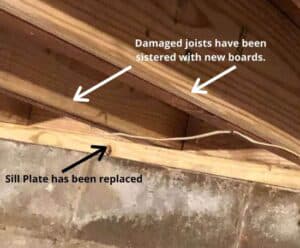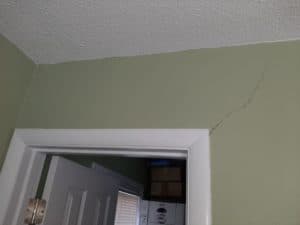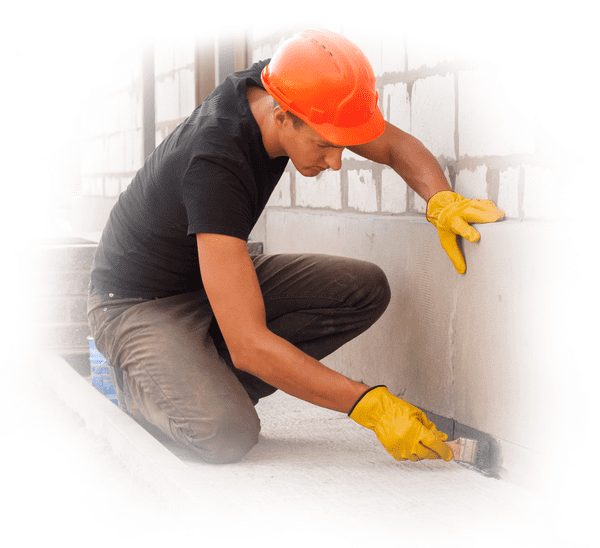Your home’s flooring structure plays a major role in the overall stability of your home. It’s built directly on top of your foundation, and everything else is built on top of it. The flooring structure has to span the entire length and width of your home, while staying level and still. But that flooring structure is made exclusively out of wooden components and over time, these start to weaken.
Wood in your home often weakens because moisture in your basement or crawl space softens the wood. Termites are another frequent cause of decay. As the weight of your home presses down, it can also compress the boards. Whatever the cause may be, your floor gradually begins to slope or sag. You’re a smart homeowner who wants to protect your investment, and you get the damages fixed. Is that the end of your problems, then?
We’d like to tell you, “yes, that’s the end of it. Everything’s perfect now.” But Acculevel is a family-owned and operated company, and one of our goals is to treat homeowners with honesty and integrity. So we’re not going to lie to you. There are going to be damages to repair after your floor is corrected. Since our start in 1996, we’ve helped more than 35,000 homeowners restore strength and health to their homes, and we know you want your home to meet its fullest potential.
In this article, we’re going to review what can happen to your home after the damaged floor components are repaired or replaced.
How Are Sagging Floors Repaired?
The exact repair method for sagging floors depends on which component has failed. (If you’d like a refresher course, we explore flooring structure and repair methods here.) But all of these repairs have one thing in common: we have to temporarily move the floor itself.
Of course, we’re not talking about taking the entire floor apart, or relocating it somewhere else. We just have to shift it a smidgen- just enough to give us room to replace or reinforce the failing pieces. Let’s use a failing sill plate as an example.
The sill plate is the board that is installed directly on top of the foundation wall. If it’s rotting or damaged, it has to be replaced. All of the floor joists are resting on that sill plate, which means it is not going to move unless you alleviate that pressure.

This photo was taken by an Acculevel team member after making repairs to the floor joists and sill plate.
So before the damaged sill plate can be taken out, we have to transfer the support of the floor joists. We put a temporary beam under the joists, and then lift that beam up a few ‘frog hairs high’ (Midwestern slang for a wee bit of space). That small gap is enough room to shimmy the sill plate out.
Then, we have to slide the new sill plate into place. This may require lifting the temporary beam a bit more, depending on how much the old sill plate had compressed. The crew members will only lift the floor the minimum amount required, then they’ll hammer against the side of the board to push it into place.
Did your project advisor caution you to remove art or other breakables from a section of wall in your home? It’s because hammering a component into place can jar the attached floor and wall enough to knock things down.
Once the sill place is installed, the temporary beam can be removed. The joists are once again resting on a solid piece of lumber. That new sill plate should be healthy and secure for a long time to come- assuming you’ve resolved whatever issue caused the damage.
Generally, Acculevel recommends that you wait to repair/replace wooden components until after an insect infestation is managed by an exterminator. If moisture is the primary cause of decay, we’ll recommend waterproofing and/or a dehumidifier as part of our whole-home solution.
What Happens After the Sagging Floors Are Repaired?
While your house’s overall framework has only been slightly rattled during this process, it’s still had a noticeable impact. Items like drywall and plaster don’t like being bumped around, so you may have some new cracks in the walls or ceiling. We do not recommend that you fix these immediately, and we’ll explain why in a moment. Before we do that, we need to also consider what other issues you might find.
How Long Has the Floor Been Sagging?
In most cases, sill plates, floor joists, and even main beams deteriorate slowly. This means there have been small changes happening incrementally over a long period of time.
You’ve probably been making small adjustments or accommodations for that damaged floor for months- even years- and never realized it. This may seem odd to you, but think about it: if you noticed one day that your refrigerator was slightly uneven, you wouldn’t assume the floor under it had moved, right? You’d just assume there was an excess of food on one side (making it tilt to the heavier side), and adjust the legs until the fridge no longer wobbled. Humans adapt quickly, and the simplest explanation is usually the best one.
The same is true for a lot of other early warning signs. If you have a kitchen cabinet that often seems to be open, do you think about the cabinet being unlevel? How did you solve it? Did you leave the childproof lock on it, after your youngest child grew out of the toddler stage? Maybe you blame the family pet for opening it? The same thought process happens when windows or doors don’t stay open/closed. We prop them open, and shrug it off.
But you’ll become aware of all those adaptations after you fix your sagging floors.
Sagging Floor Repairs Will Affect on Your Home
We are talking about small adjustments that have a profound impact on your home. All sagging floor repairs include a certain amount of lift. Whether you replace a compressed sill plate, sister (reinforce) floor joists, or raise a beam under your floor- all of these actions are moving your flooring structure back “up” towards its original location.
The results will be a mixed bag. Some things that have been bothering you will probably go away: gaps between the baseboard and the floor will close, doors that haven’t stayed shut may fit better in their frames, and the floor shouldn’t slope or feel so bouncy any longer.
But you will find more cracks in the drywall, and possibly in tile flooring. Floorboards may creak more, or in different places as things shift. Doors or windows that have been replaced may become tight or stick, now that the framework is more square.

This photo was taken by an Acculevel project advisor, during a free home assessment. Cracks around doors and windows are common sights when homes are shifting.
Why Should You Wait to Repair the Damages?
It’s going to be frustrating, seeing all these little imperfections around your lovely home. You’re probably wondering why you can’t go ahead and correct them? The work is done, so what’s the delay?
For Most Floor Repairs, Wait 6 Months
We recommend that you wait at least 6 months after sill plate, band board, and floor joist repairs. This is because wood has a sort of memory to it. The various components in your floor have been slowly sinking, compressing, etc. When you suddenly move these boards, it’s a jolt to the home’s framework. It needs time to settle and adjust naturally to its new (original) position. When you repair things too soon, you may have to do it more than once.
If You Need Main Beam Repair, Wait 2 Years
If you’ve had the main beam of your floor replaced or repaired, you’ll need to wait even longer. We can’t speak for every contractor’s process, but we have a slower method for main beam corrections. When we replace a main beam, the supporting columns below the beam, or add adjustable jacks to better support the beam, we provide a 2 year warranty.
This two year warranty is specific to main beam and jack repairs. It includes 3 adjustments over that 2 years. We want to have a service technician return to your home and make small increases in the beam location, spread out over a longer period of time. This minimizes the scope of the damage done to your home; it’s less “shock to the system,” you might say. This is especially important because most home construction companies place a major load-bearing wall directly over the main beam. Shoving that aggressively into place could actually do more harm than good.
Most Sagging Floor Repairs Take Place in a Crawl Space
Homes with crawl spaces are much more likely to have sagging floor problems. This is because there is so little space between the ground under your home and the wooden flooring components. Moisture has more opportunity and better access to the flooring; making it more susceptible to rot and damage.
Have More Questions About Sagging Floor Repairs?
We invite you to download a copy of our Homeowner’s Guide to Crawl Space Repairs. This is a free document that we update regularly, to provide the best and most relevant information about the major issues that plague crawl spaces. These include sagging floors, water intrusion, and biological growth. We explore what causes these issues, how to repair them, and what these repairs cost.
We also have a DIY Foundation Inspection Checklist you can use to monitor your home for potential signs of damage. You should perform this inspection twice a year (Spring & Fall), to make sure your home is ready for the weather extremes of summer rains and winter storms. This checklist walks you through a thorough review of your home, both inside and out, to help you become aware of any warning signs before they become costly repairs.
Do You Have Sagging Floors That Need Repaired?
Acculevel is based out of Rossville, Indiana. We serve the entire state of Indiana and portions of the surrounding states. If you live in our service area, call us at 866-669-3349, or you can complete our online form.
We will schedule an appointment with one of our friendly and knowledgeable project advisors. They will come to your home, review your concerns and any problems you’ve noticed, then perform a detailed examination of your entire home. Our goal is to provide you with a whole-home solution, one that addresses the causes and the symptoms you have found.
Once the assessment is complete, your project advisor will review his findings with you, and explain all of the repair options. Together, you will determine the best course of action for you and your family, so your home is strong and healthy for years to come.



















